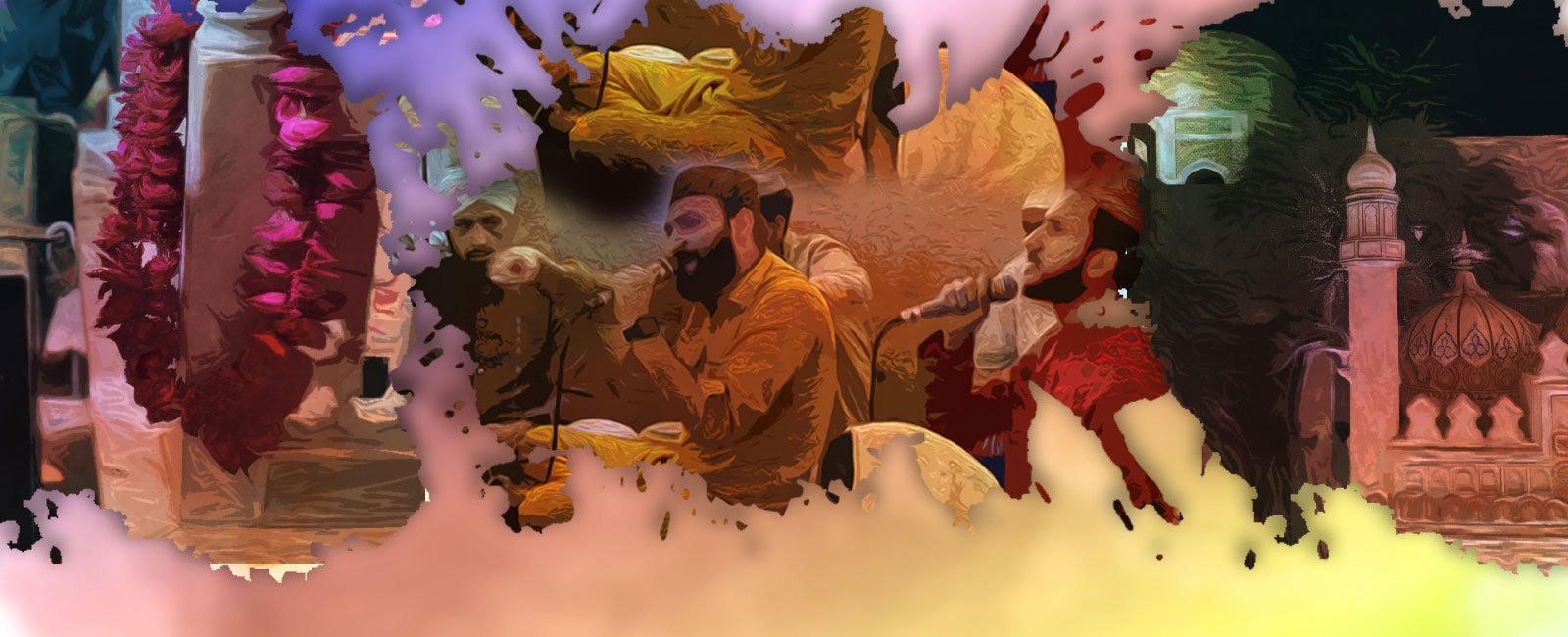A sojourn into Lahore's spiritual sights, sounds in search of self
These sights are archives and memory keepers of Lahore's culture and history, but also tell us about the tradition of oral tales and shine a light on the revisionist aspects of who the historian is...

There are conversations that cities hold with us, in their small delicate ways. This night was a conversation I had been seeking for a while. Standing by the latticed partition in Data Darbar, a woman approached me and gently held onto my wrist and asked: “Are the white streaks in your hair dyed?” I’m used to this question. In most cases, it does not violate the bounds of any privacy for me anymore. We Lahoris like questions, we like to ask, and we then want to extend the conversation, like a knot tied to a branch, we connect by sharing our experiences and we want to be heard.
Perhaps that is true for every other metropolis as well, but I’m returning home after a long time so I’m only thinking about Lahore. After graduate school, I came back to Lahore in desperation, almost seven years ago and in this period since then I have lived in purgatory, a waiting room — my suitcase still in the corner, waiting for me to resume the journey back. It was only in September last year that I felt that I physically arrived back in Lahore. I wanted my unmoored soul to reconnect to itself and the city. Perhaps that is why I was there that night after I signed up for the 'The Shrines of Lahore’ spiritual tour with Lahore ka Ravi.
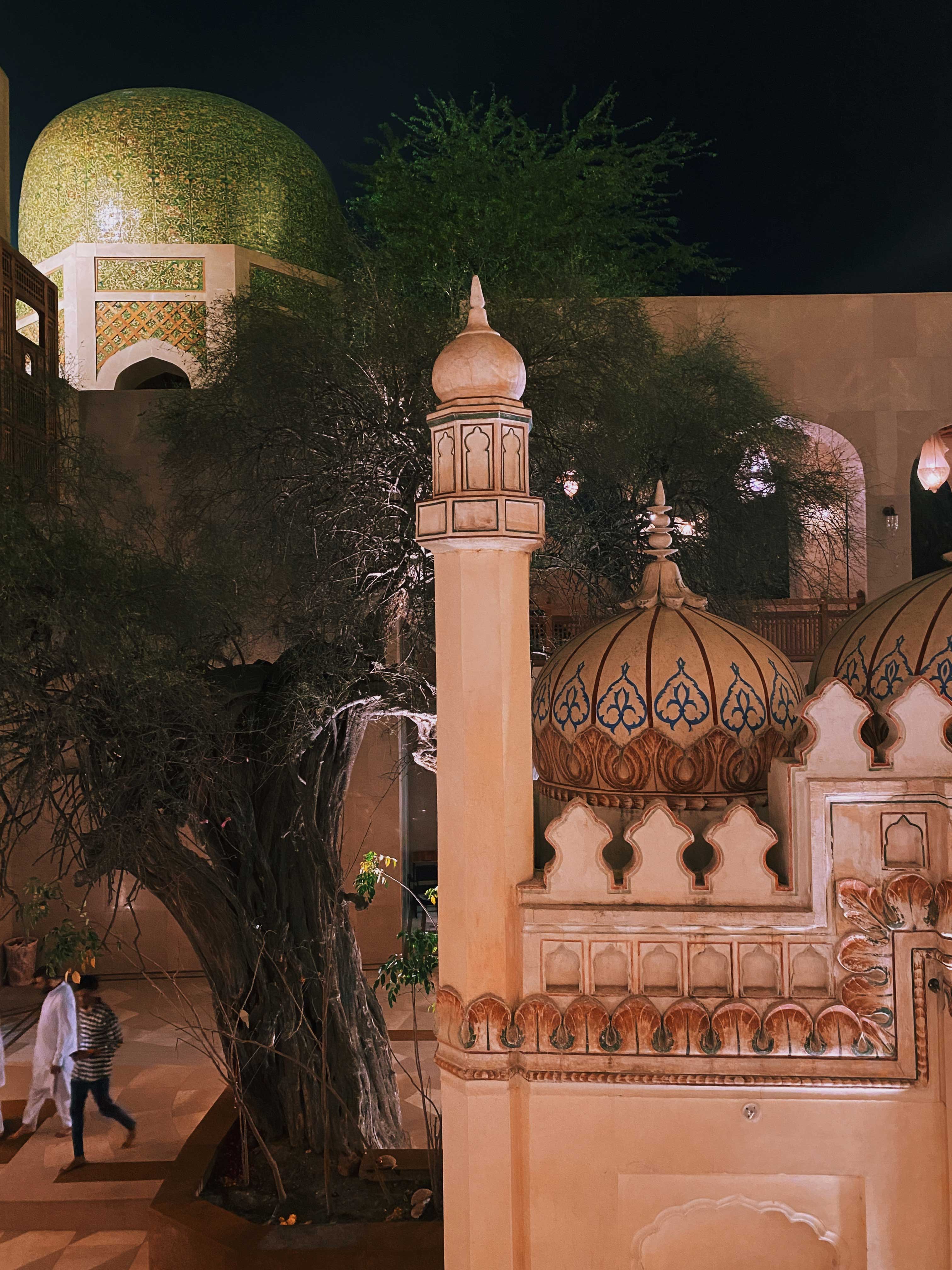
I shook my head, she smiled and started telling me about her dark hair and how her son used to compliment them. Dark, like the sky, they never changed colour, she said. She spoke pensively and in the past tense about her son, I dared not ask more, I listened. When the group started walking further, as she reluctantly parted there was more she wanted to say, it seemed.
My friend asked me what it was that she was saying, I thought to myself, she just wanted to be heard, and listened to. The urge to be heard, it reminded me of the woman I had interviewed in Karachi at a protest by the families of the enforced disappeared. She had asked me about Lahore and had insisted that I must visit Data Sahab’s darbar. She herself had visited it for the last few years since her son had disappeared from Balochistan.
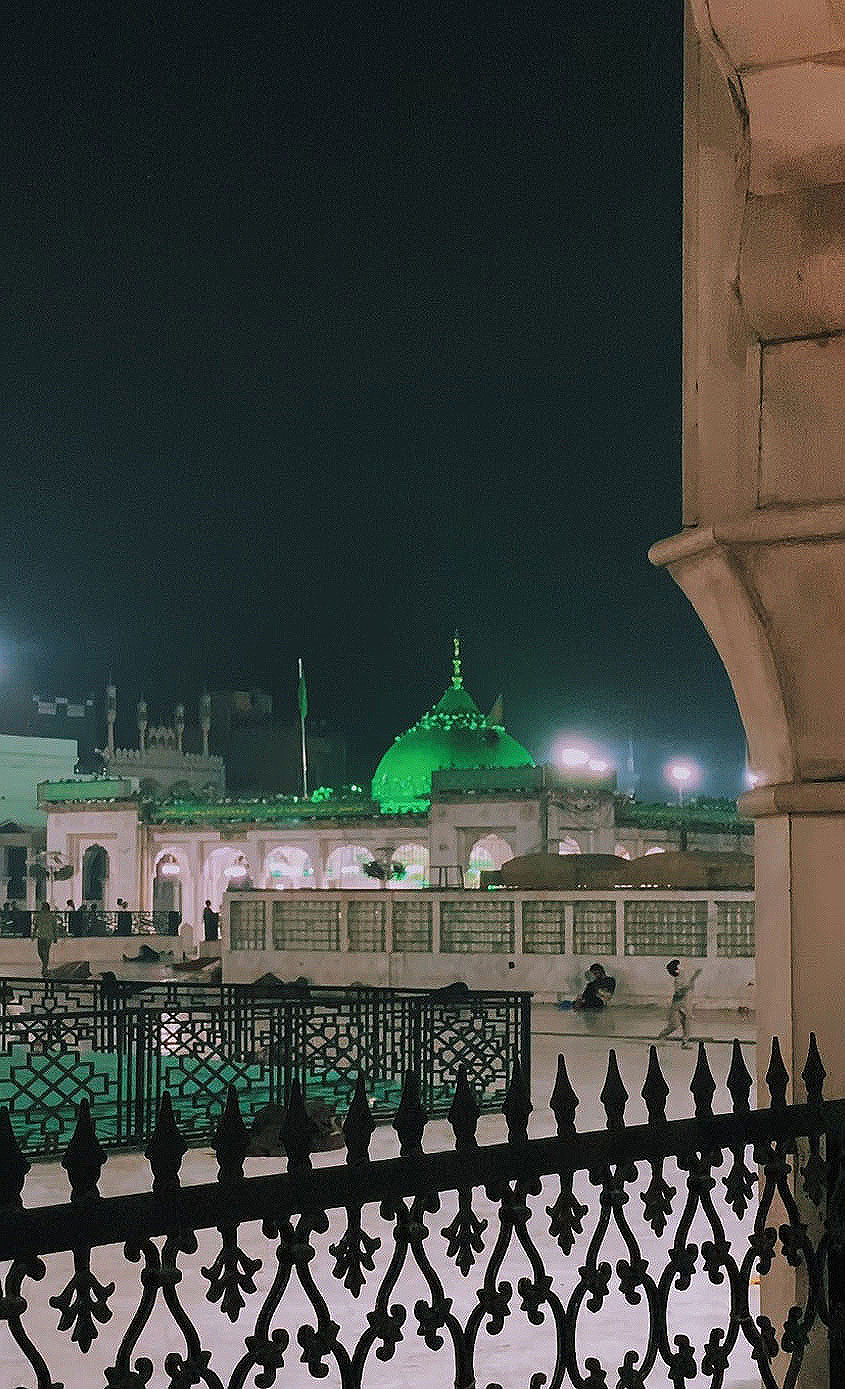
This form of loneliness is what we all carry, in urgency, in love and within the country of our skins — we take it with us to our cities and to its people, for how else can one find a connection if we have no desire to tell and hear? If cities are the keepers of culture and history, they are also the keepers of our loneliness, our secrets, desires and prayers, they are also the keepers of our need to be heard. And perhaps that is what all of us were doing there that night too, carrying our loneliness to be heard.
One night after iftar I took a group heritage walk exploring four diverse spiritual spaces — a darbar, a mausoleum, an Imambargah and a shrine, within the city of Lahore, led by three distinct storytellers of Lahore ka Ravi. Lahore ka Ravi (LKR) is Ghazi Taimoor’s project of his “heart and rooh”, an archive of sorts, merely calling it a passion would be too simplistic — his Instagram feed is his documentation as a flaneur, as he walks late into the hours of old Lahore.
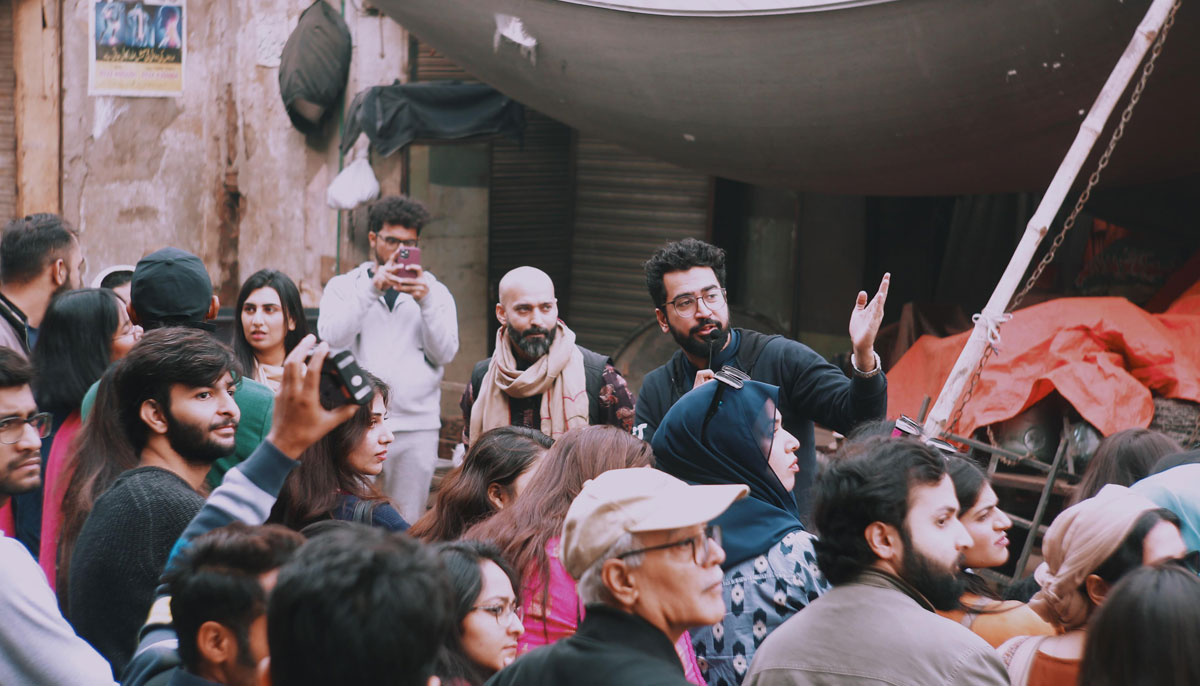
Here, he talks to people in their streets, outside their shops and the facades of their houses, he records flautists and street singers and converses with chess players and tradesmen making tablas and harmoniums. He asks the people their stories and laughs with them while having custard, anda shaami and lassi under the light of street lamps, and on other nights he goes with his friends Hashir and Fawad through lanes under dimmed light seeking out abandoned havelis and mandirs — sites for his walks.
“When I arrived back in the city after years, these two took me around andaroon (walled city) on their bikes,” he told me.
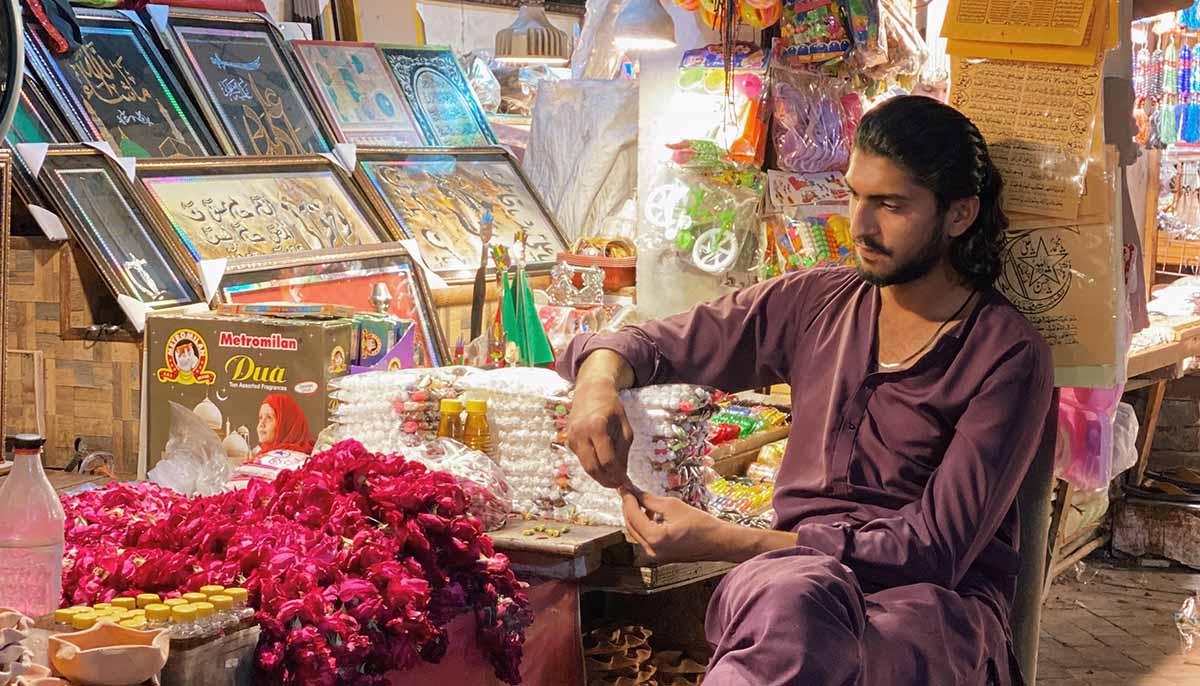
This meaningful friendship, too, then is a story of finding a connection through the city. All of this is as flautist Taimoor is excavating and building a repository of a living city which he is resolutely in love with.
Taimoor, an educationist and a chartered accountant, returned to Pakistan after almost a decade abroad, where despite professional success, he felt an urge to hear and tell stories related to the multitude of identities that each of us holds within. But what led him back home wasn’t that he himself held multitudes but his recognition that the places he had known held them and, in that longing, to hear them, to become one of their memory keepers, he returned.
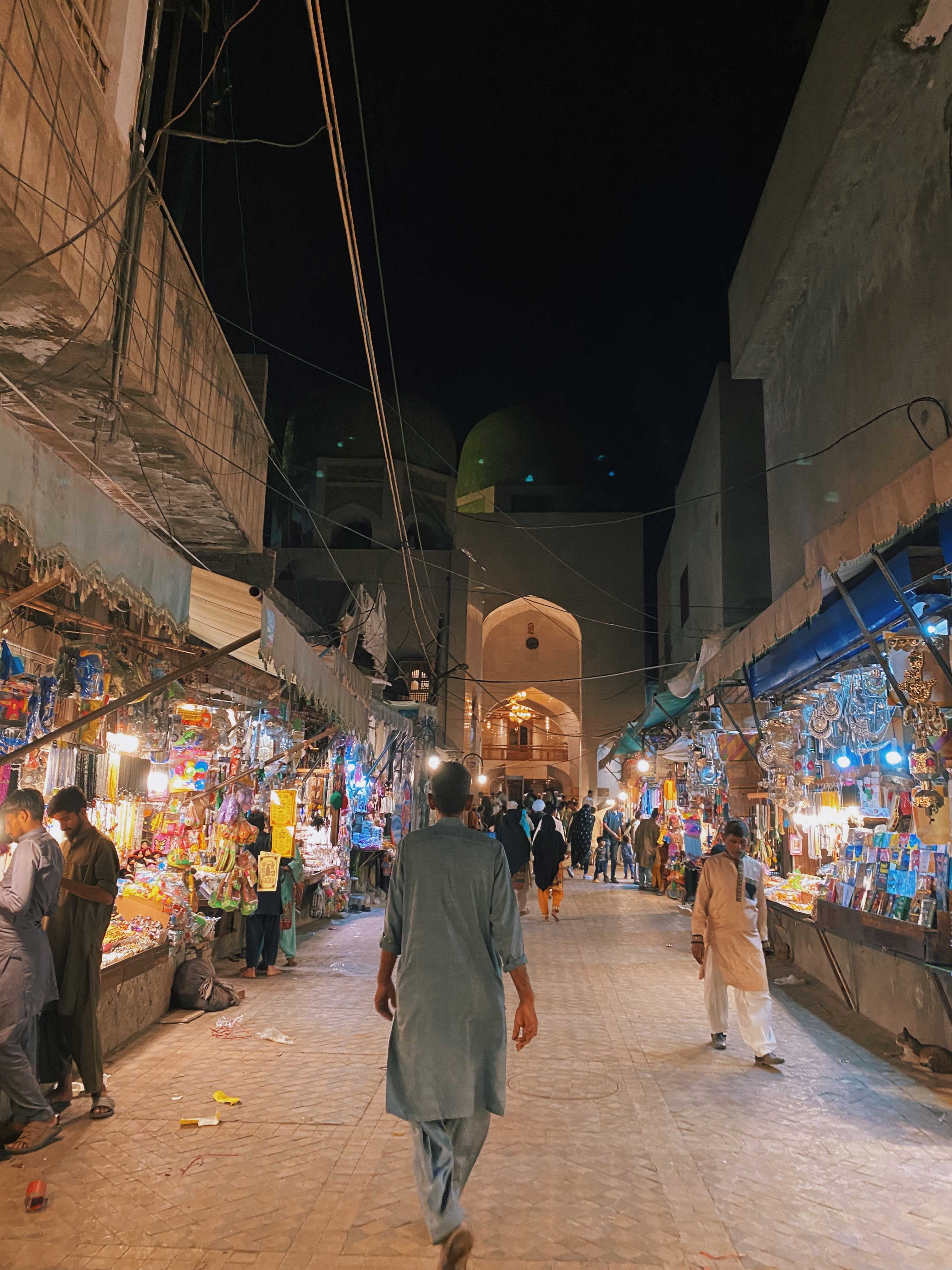
In the fall of 2023, he founded Lahore ka Ravi and runs it with a team of his friends to organise themed storytelling walks throughout the city. He has led beautiful walks in his excited, passionate and delicate way. He talks about these stories which feature beautiful havelis in the city, and food crawls which explore cuisines which form the anchor of this city.
His walking trails, he explains, are not to encourage voyeuristic tourism but rather designed as immersive experiences which go beyond history lessons or walking through the city as an outsider. The idea was to converse with the city in all that it holds for a beholder — beauty, desire, derelict and the worn-out, to appreciate the diversity of subcultures and all faiths. They were also meant to go beyond the framework of how we are repeatedly forced to see ourselves through the lens of orientalist Western frameworks of what is aesthetic.
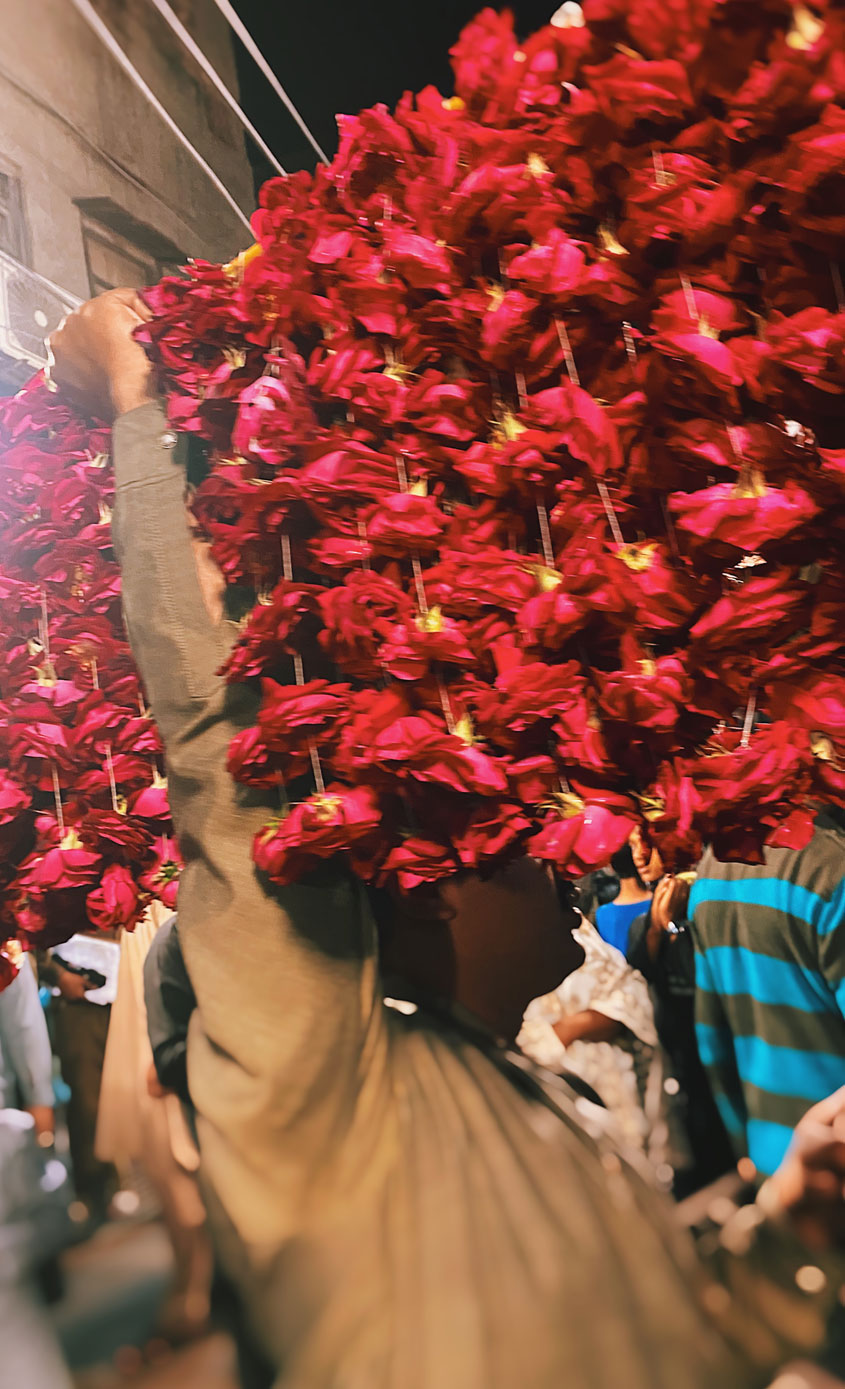
The ‘Lahore ka Ravi’ name is a play on the homonym Ravi/rawi, the name of the city’s historic river and from the word for narrative oral storytellers in Arabic tradition which holds the meaning of a memory bearer, and a story reciter. Ravi is now a vanishing river, polluted by industrial waste and its banks being eroded by construction. And rawi in Arabic literary traditions would memorise the works of poets and recite them for the public. Here, Taimoor is a rawi and a memory bearer of his beloved city whose river is vanishing, its history being revised in school curriculums — quite a quest and a task.
In a city of around 13 million people, one isn’t alone physically but even social indicators can hardly measure the scale of loneliness and ennui one can hold within oneself if one wants to be heard — by others, by the divine, by the city and its spaces, and sometimes even our own selves. How does one find connection and meaning then?
I walked through four spiritual spaces that night — Data Darbar, Mian Mir Shrine, Karbala Gamay Shah, and Bibi Pak Daman — all in the same night to look for some respite — to be heard or to hear, I couldn’t say precisely yet. “These spaces are like temperature controllers of every city, and are hubs of emotions, joy, celebrations, hope, prayer, solitude, and community; these provide an avenue for all,” said Taimoor.
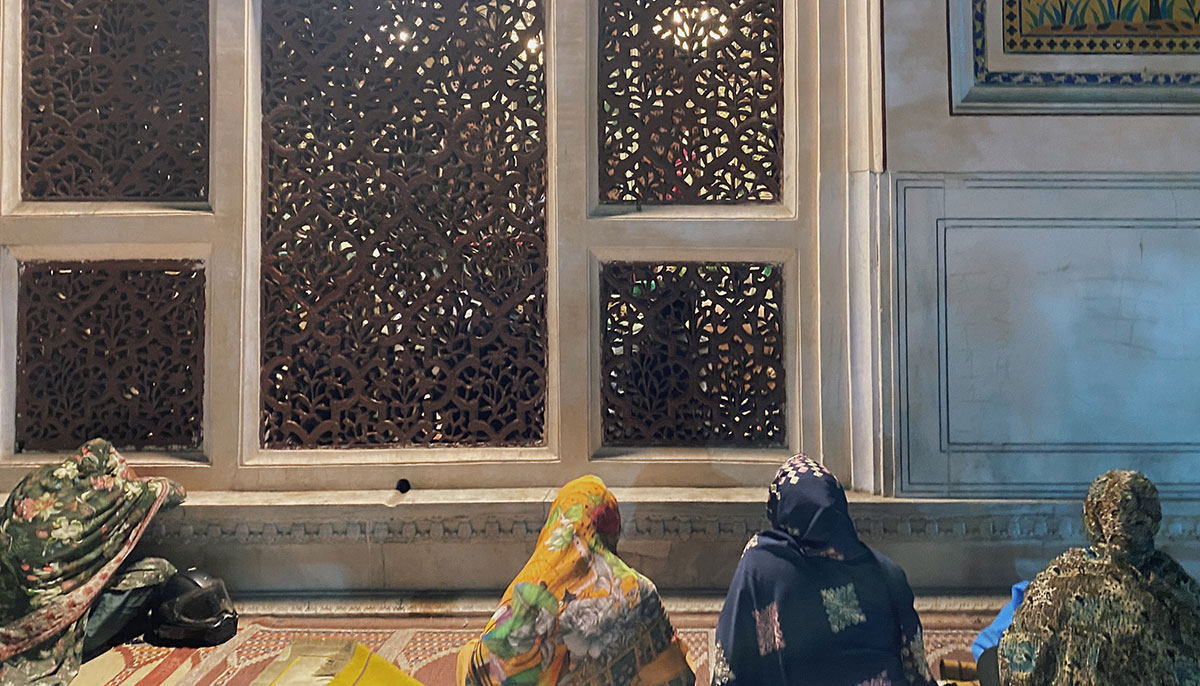
Huzaifa Ahmad — co-founder of an award-winning social enterprise Rizq, which combats the issue of hunger through food banks and langars around the country — was one of the co-storytellers that night. Ahmad is soft-spoken and like Taimoor, passionate and has softness in his voice when the topic of Lahore comes up. He said that when he moved to the city, he would look for places of solitude, and it is through his search for these places that he was inspired by Data Sahab's daily langar to scale his initiative.
Data Darbar and Mian Mir — two of the sites we visited provide food and space to sleep. “It was reassuring that even if one did not have enough money or a place to sleep, Data Sahib had created a space where you could still find food at the end of the day,” Ahmed shared later during the bus ride.
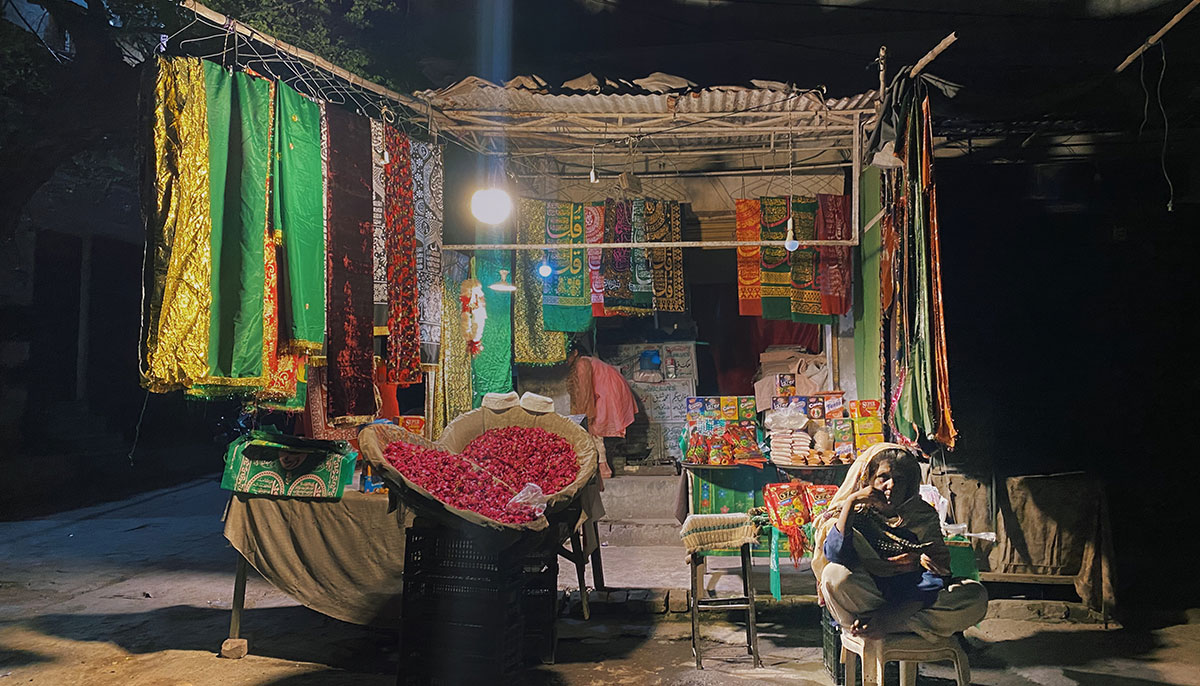
As we traversed shadowed dim streets, and brightly lit junctions and continued on, we were surrounded by sounds — of ourselves, the city, the people in these spaces singing their kalaam alone in the corners which reached further than our ears — does sound travel to a place beyond bodies and into souls? There is a beautiful South Asian tradition of qawwalis and music at shrines and spaces of spirituality.
It reminded me of Annie Ali Khan’s beautiful account ‘Sita under the crescent Moon’ published posthumously about her spatial and ethnographic accounts of visiting spiritual spaces of all faiths around Pakistan and encountering singers sitting with their harmoniums and tablas, just like the qawwal at the entrance of Bibi Pak Daman when we reached after midnight. Music comes from our rooh (spirit), at most times so elusive that even words can’t explain the depth of prayer and desire within them that a heart might hold, a medium to connect with our divine.
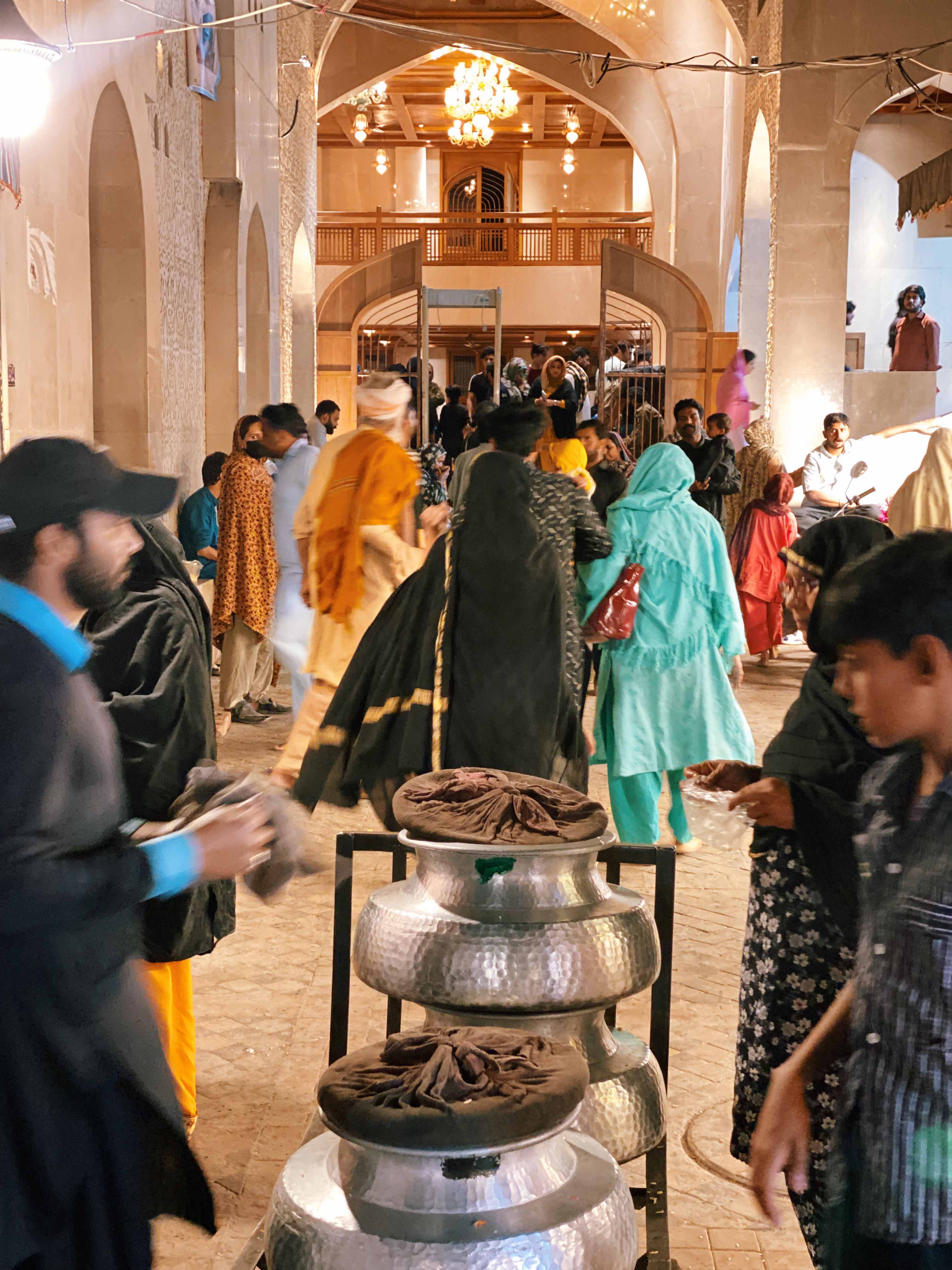
Then there were the everyday sounds of a heavy daig (a large pot) being placed on the floor, the voices of stall owners calling out, despite every ware and emotion which was up for capitalist consumption, there was some invisible string that was connecting us to the faint dim of horns from the traffic and the various hamd playing on speakers at corner shops. And the gentle continuous hum and business of breathing, existing and living continued.
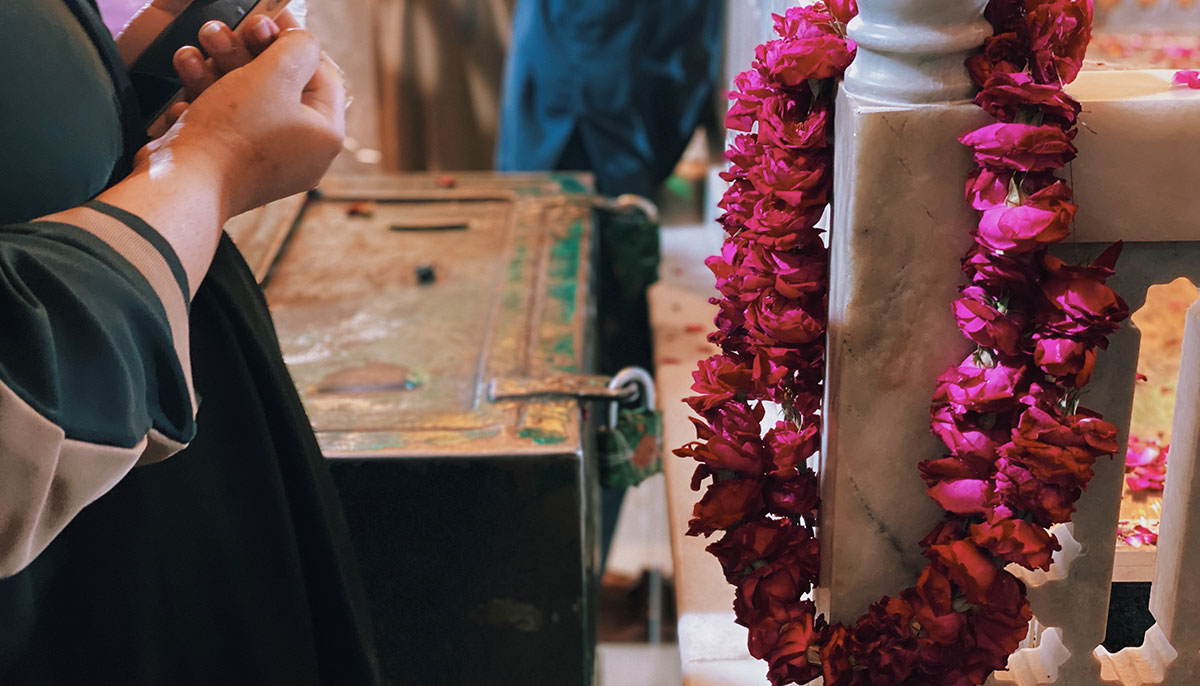
And amidst all these sounds and rhymes, more than any other, if careful enough, observing with tenderness, you could hear the sounds of prayers uttered in whispers, alone and together, floating off into the night, in softness, in urgency, in ishq.
The coloured threads tied to railings and tree branches, rose petals scattered on the marbled floors of the maqbara (tomb), and graffiti scribbled on walls — phone numbers and confessions of love or names of loved ones. These were all calls in faith too, varied, urgent, and palpable. Fingers and palms gently pressed, a dua (prayer) whispered. Everyone just wanted to be heard and listened to. We weren’t just witnesses, we were participants too.
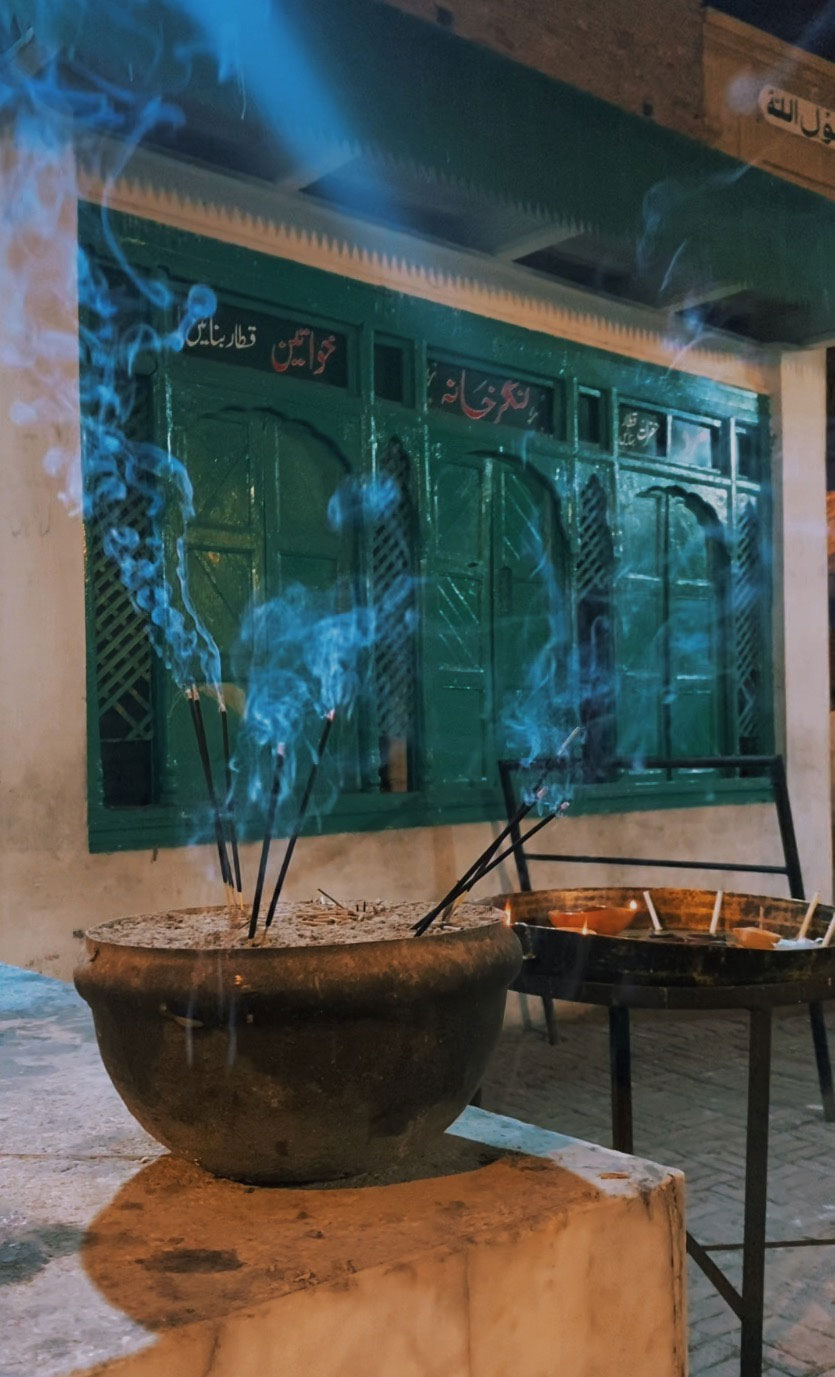
Karbala Gamay Shah was our first site, which was an empty courtyard when we entered and a single figure sat near the entrance singing kalam about Karbala. Similarly, Mian Mir, our last site, was also vacant of its hordes of visitors because it was nearer to sehri time when we reached. And in between, Data Darbar and Bibi Pak Daman were luminous — such radiance and energy in the sounds around the spaces.
Bibi Pak Daman was the most vibrant of the sites we visited, and the beautiful restoration by Nayyer Ali Dada and his team has kept the spirit and the essence of the space. The stories of feminine resistance that the place holds were radiant and charged, subtle and powerful, as the third storyteller Duaa Zahra beautifully and powerfully narrated the history of the space. In contrast to Data’s segregated shrine and Mian Mir’s mausoleum, which did not allow women inside, Bibi Pak Daman made me feel like I was accepted and belonged.
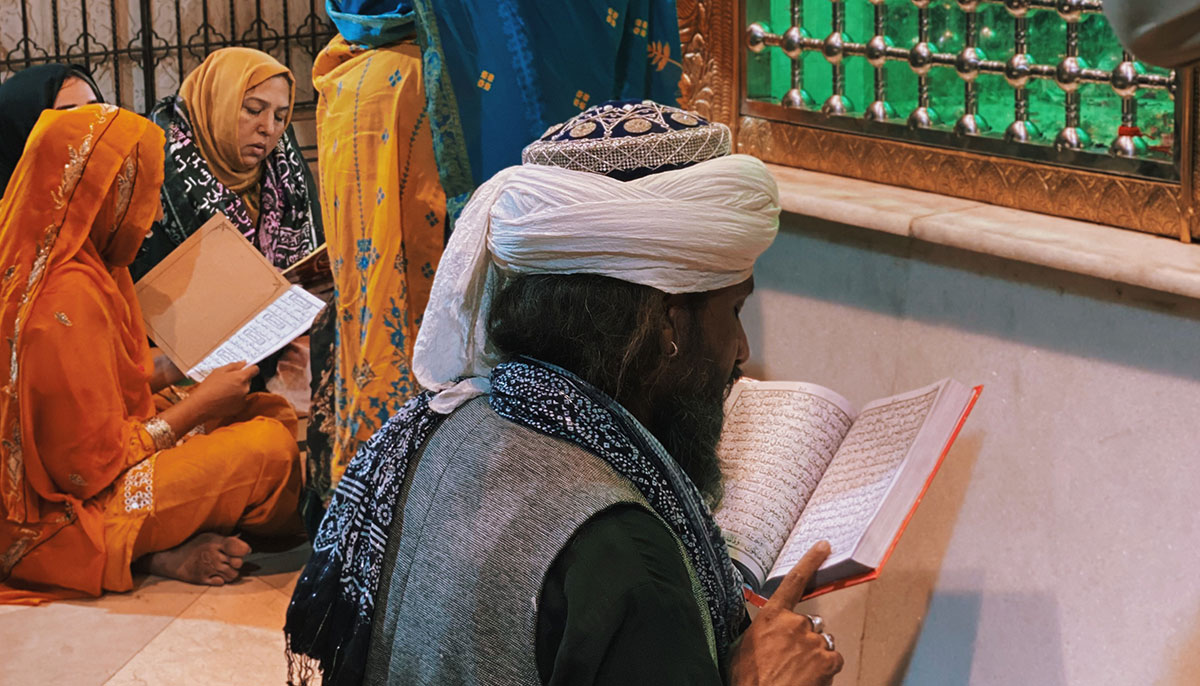
The coexisting dualities between silence and sounds created an energy, or perhaps it reflected how both chaos and stillness, loneliness and the need for connection, the desire to connect and to hold still and disappear — all of which my mind holds at various times especially ever since I have returned home.
These sites are archives and memory keepers of the city's culture and history, but also tell us about the tradition of oral tales and shine a light on the revisionist aspects of who the historian is and what serves that dominant narrative. And most of all these sites are also keepers of people’s secrets, their urgent desires and prayers, the places where people come for langar, food, and to sleep if no other part of the city accepts them.
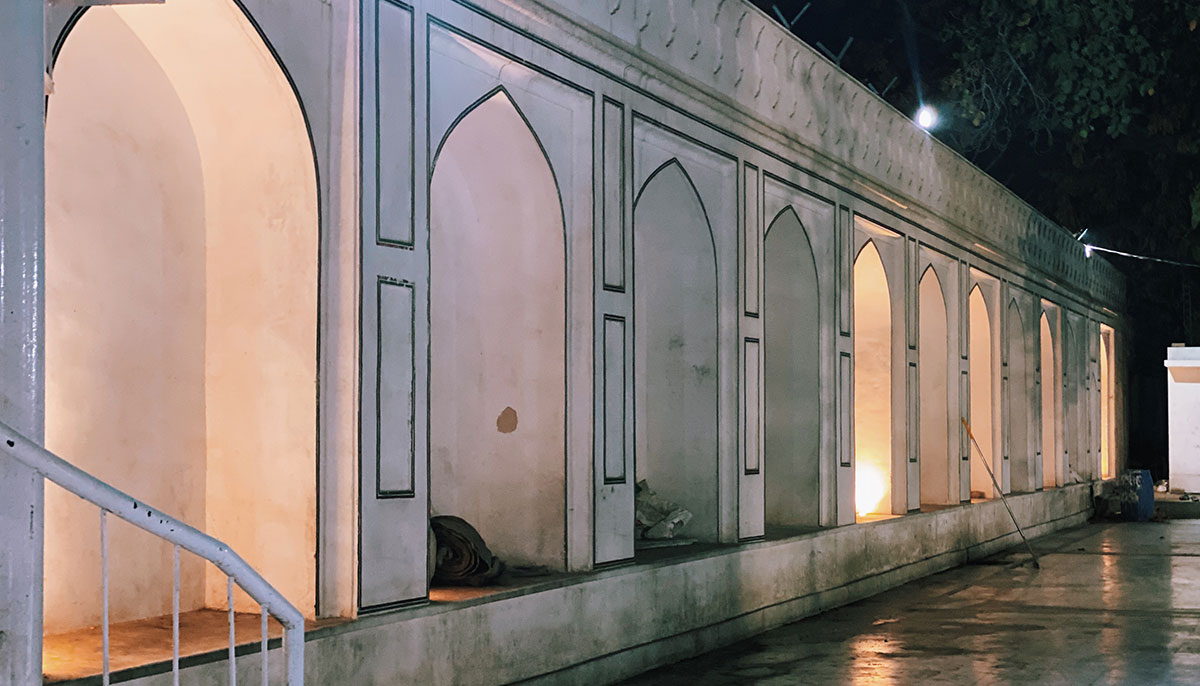
Taimoor ended the walk by saying how these cities are us and when we venture out, we should go out to seek ourselves in these, while also emphasising how we should find and free ourselves from the imposed western frameworks we see our cities and ultimately ourselves within.
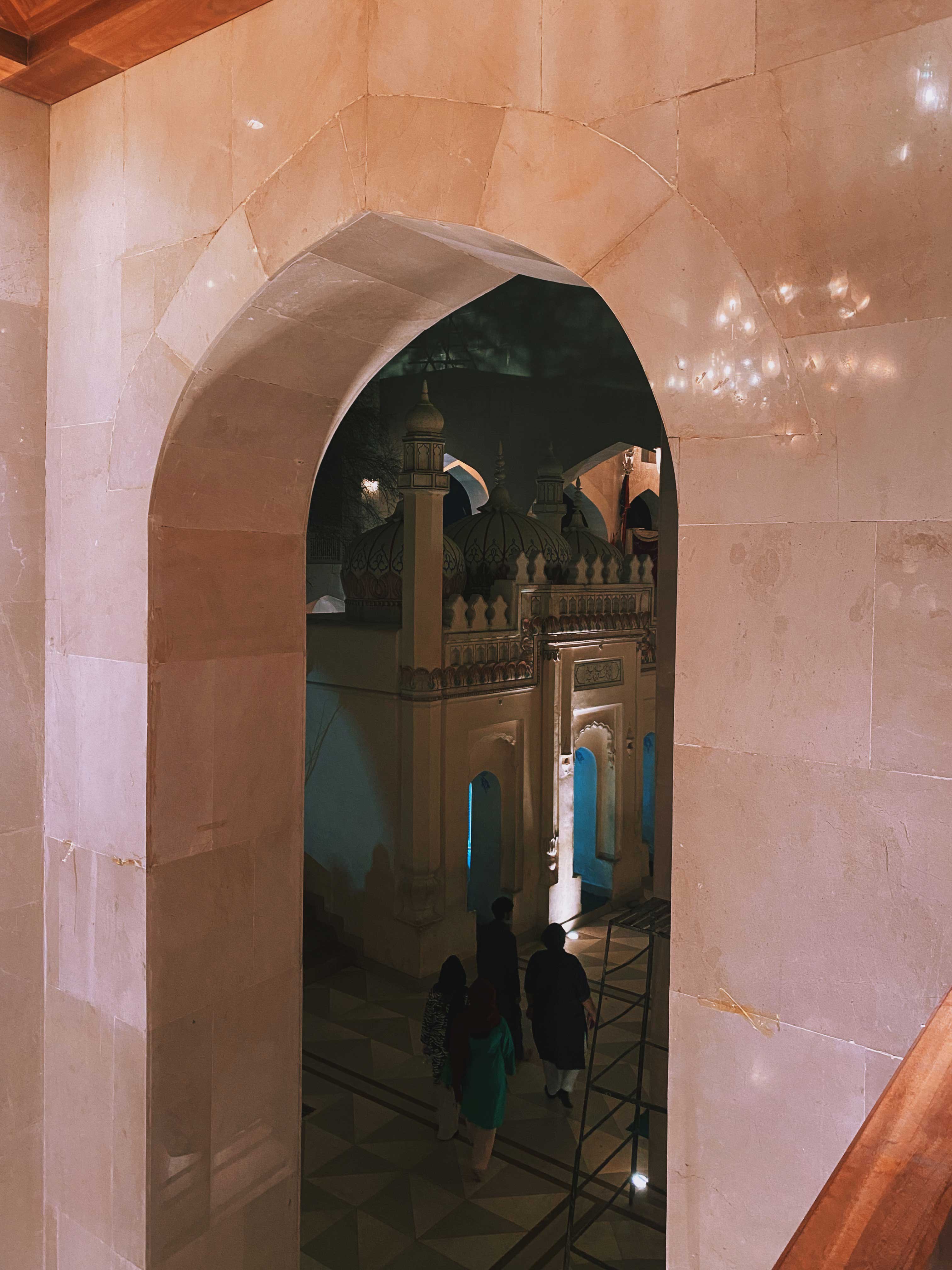
While we were still reflecting on our night in an empty courtyard of the Mian Mir shrine, Huzaifa and his team generously served sehri — biryani and lassi — true to the idea of how breaking bread (or having biryani) together can help form a community, even if briefly, a respite to our ennui in a sprawling lonely metropolis. At that moment, we were all temporary musafirs (travellers), having returned and arrived at some part of ourselves.
The photos in this essay are traces of seeming connections I found that night, and as they say, photos hold more than what words can, and sometimes more than what even a heart can.
Nazuk Iftikhar Rao is a Lahore-based writer and development economist. She is working on her first novel as a fellow at the South Asia Speaks. She posts on Instagram @portraitsoflonging.



